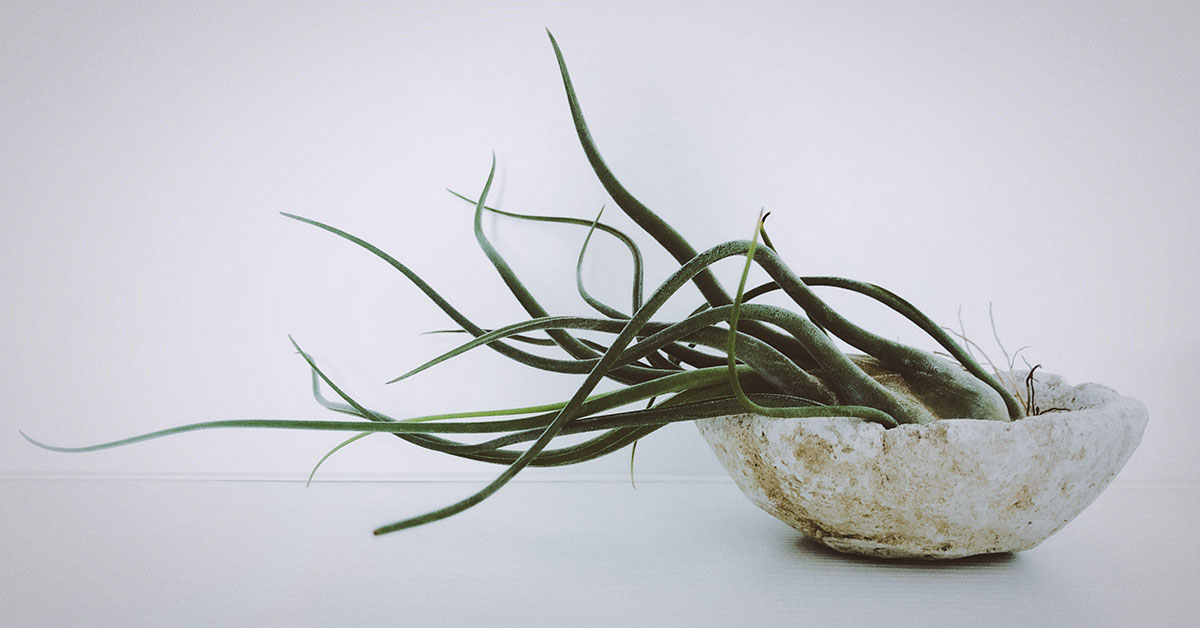Air plants (Tillandsia spp.) are a genus of flowering plants in the bromeliad family native to the forests, mountains, and deserts of Central and South America. They are epiphytes, meaning they grow without soil, using their roots only for anchoring themselves to other plants or surfaces. They absorb moisture and nutrients through their leaves and require very little care beyond regular watering and come in tons of different colors. One common issue with air plants is the browning and dying of their leaves. It leads many to ask: why is my air plant turning brown? In this article, we’ll take a look at the most common reasons for this problem and how to fix it.
General air plant care
Air plants (Tillandsia spp.) are very easy to care for and require minimal maintenance. They get most of their nourishment from the air, so they don’t require soil. To care for an air plant, give it a light misting of water 1-2 times a week, or submerge it in water for about 30 minutes once every week or two. Make sure it is in a location with bright, indirect light, and that the temperature is between 55-80°F (13-27°C). Once a month, give the plant a light fertilizer. Be sure to shake off any excess water after misting or soaking, and never leave the plant in standing water.
Why your air plant is turning brown
If your air plant is beginning to turn brown, it’s usually the result of one or more of four things: too much sun, too little water, water trapped between the leaves, and aging foliage. With the exception of the last on this list, each one has a reasonable and simply fix. Let’s dive in.
Too much sun
A common problem with air plants is that too much sun can cause them to turn brown. While air plants love bright, indirect light, they don’t like too much direct sun. If an air plant is placed in direct sunlight, the leaves can start to get dry and brittle, and eventually turn brown. To avoid this issue, it’s best to give your air plant bright but filtered light. Place the air plant near a window that gets a lot of sunlight, but make sure to put a sheer curtain or blinds in the way to filter out some of the light. If you’re still having problems, you can also move your air plant out of the direct sunlight and into a shadier spot.
Not enough water
If you are not watering your air plant often enough, it may start to turn brown. Air plants need to be watered about once a week and should be soaked in water for about 20 minutes, then allowed to dry off completely before returning to its home. It is important to note that air plants should never be left in standing water, as they will rot. Additionally, you can also mist your air plant with a spray bottle every few days to give it a light misting and keep it hydrated.
Trapped water
When you water your air plant, it’s important that it be allowed to completely dry. If water gets trapped between its leaves and lingers there, it can cause your air plant to rot and turn brown. Shake your air plant out to remove any water that may be lodged between its leaves before placing it back in its home location. Don’t allow your air plant to sit in water for more than about 20 minutes.
Aging foliage
Foliage near the bottom of your air plant that has begun to turn brown is likely doing so because of old age. If this is taking place throughout the plant, it could be that your whole air plant is aging. Air plants, on average, live up to about 5 years.













